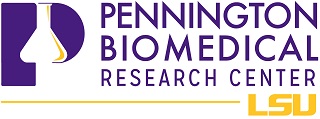Data Contents
We are deeply grateful to the individuals who volunteered for participation in the study. Without their dedication and involvement, this research would not be possible.
When downloading publicly available CALERIETM data, please acknowledge the current funding supporting this site’s infrastructure and the ongoing CALERIE Network (R33 AG070455). Based on critical involvement in data acquisition and understanding of original CALERIETM Phase 2 design, please consider engaging the following investigators in your analyses and manuscripts using CALERIETM Phase 2 data: Manju Bhapkar, Sai K Das, Kim Huffman, William Kraus, Corby Martin, Carl Pieper, Susan Racette, Leanne Redman, and Cliff Rosen.
Email CALERIE@duke.edu for more information.
Sincerely,
Clifford J Rosen MD
Professor of Medicine-Tufts University School of Medicine
Senior Scientist- Maine Medical Center Research Institute
Associate Editor- New England Journal of Medicine
Data Repository Guide
The Guide to Using the Public Database document describes the contents of the database download files, how to install them and data usage notes.
1. Contents of the SAS Database zip file
2. Installing SAS transport files
3. Contents of the ASCII Database zip file
4. Opening ASCII files
5. Raw datasets
6. Analysis datasets
7. Data Usage notes
8. Table of major data domains
Data Repository Contents
This section consists of the technical documents describing, in detail, the public use dataset. It is most often useful in creating an analysis data set. The data described within is optimal for building a Person-Time data set – one observation per each visit a subject provided information.
Documents included in this section, each of which will open in a new window:
Data Repository
Before proceeding with a study project, please check the Ongoing Projects tab to see studies currently in progress and review the Guide to using the Public Use Database - helpful information for the Network Investigator.
Click here to register and download the public database and/or datasets.
CTS Intervention Database
To support the CALERIETM protocol, a centrally maintained computer tracking system (CTS) and assessment tool was used by counselors and other study staff. The primary function of this application was to track participants’ compliance with the intervention and to facilitate intervention fidelity.
The CTS provides several reports with information about each participant and about all participants at a site. Reports describe session attendance, self-monitoring, dietary adherence, and weight loss.
CTS Deidentified Data Dictionary
Data Handling Rules
Information in this section translates how raw data are converted to the databased items and outlines data cleaning procedures established by the CALERIE Committee. They contain the ‘rules’ for derivations of variables, defining/coding variables, range limits, and allocation to refusal and missing values. These are of most use for the majority of Network Investigators when the precise definition of variables is required.
Documents included in this section, each of which will open in a new window:
- 7-day Physical Activity Recall Data Handling Rules
- Adherence Algorithm
- CoreTemp Data Handling Rules
- DXA Data Handling Rules
- Food Diary Data Handling Rules
- QOL Scoring Algorithms
- Residual Data Handling Rules
- Resting Metabolic Rate Data Handling Rules
CALERIETM Phase 2 Study Forms
This section contains all the Case Control Report Forms, Non-Case Control Report Forms, Visit Forms, Data Dictionary, and Miscellaneous Forms.
The CALERIE2 Annotated Forms map the data headings in the database to individual items in the data collection forms. These will be useful when a researcher wants to determine exactly how variables were collected and mapped into the database.
- CALERIE2 CRF Annotated Form pages 1-155
- CALERIE2 CRF Annotated Form pages 156-304
- End of Study Form
- Cognitive Assessment Test Annotated Form
- Cognitive Bias Test Annotated Form
Forms for data that were collected electronically
Data Dictionary for the dataset.
Visit Forms
- CALERIE Phase 2 Screening CRF
- CALERIE Phase 2 Baseline Visits 1-3
- CALERIE Phase 2 Baseline Visits 4 - Randomization
- CALERIE Phase 2 Week 2 Visit
CR Group CRF Follow-up | Control Group CRF Follow-up |
MISCELLANEOUS FORMS
Surveillance Forms | Discontinuation Forms |
Safety/Protocol Deviation | Miscellaneous Forms |
Table of Available Measures
Documentation of Analysis Datasets for Public Use Database
Psychological:
- Beck Depression
- Derogatis Sexual Function
- Food Cravings
- Multiaxial assessment of Eating Disorder Syndrome
- Profile of Mood
- Pittsburg Sleep
- Perceived Stress
- Weight Efficacy Lifestyle
BioMarkers:
- Bone Markers
- Doubly Labeled Water
- Delayed Type Hypersensativity
- Hematology
- Safety Labs
- Assay Methods Summary
- VO2 Max treadmill
Physiological:
- Clinic Weights
- Core Temperature
- Body Composition
- ECG
- Handgrip
- Isometrics
- Resting Metabolic Rate
- Vital Signs
Other Questionnaires:
Measures of Caloric Restriction:





